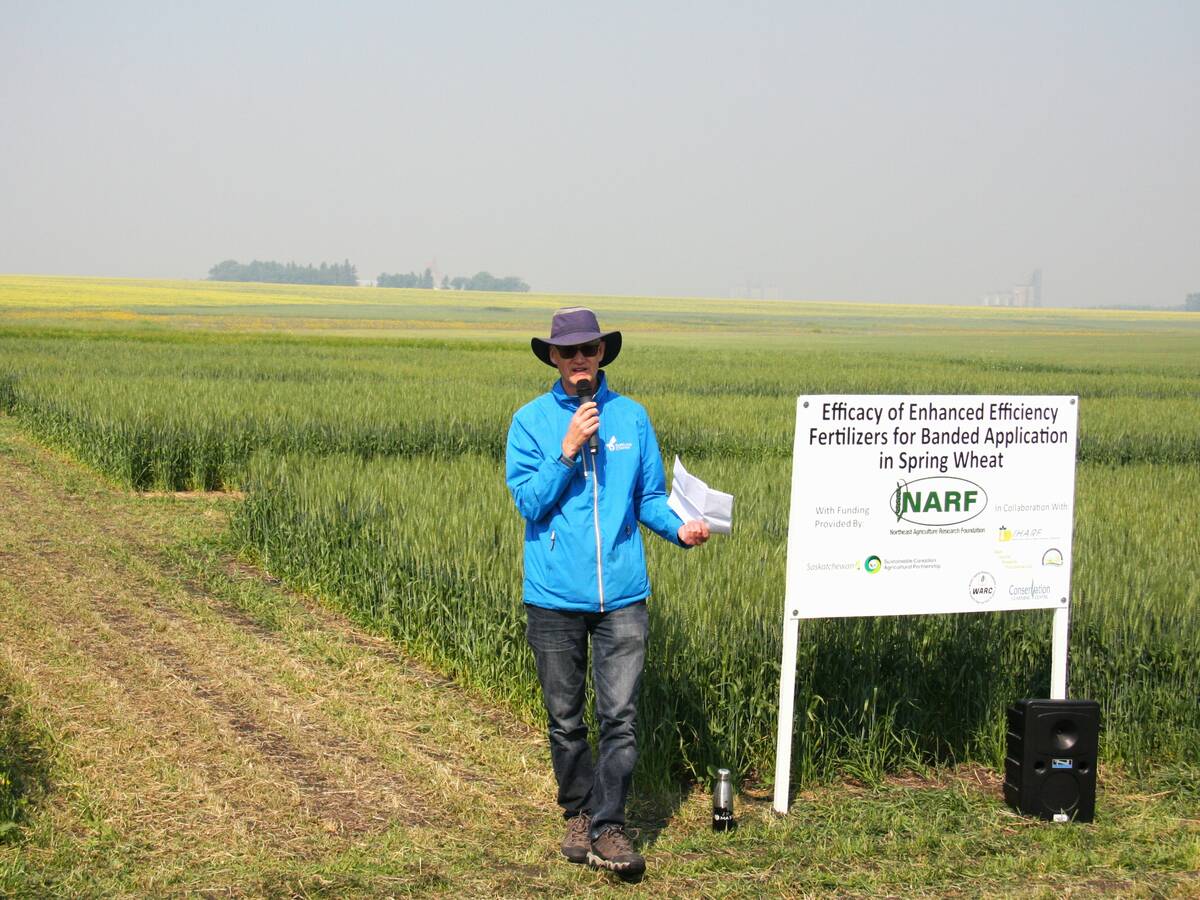It may be time to change the seeding deadlines for soybeans in Manitoba.
Right now the seeding deadline for full crop insurance coverage is May 30 for most of Manitoba. In a small region near the U.S. border the deadline is June 6.
Research done from 2015 to 2017 shows that soybeans can be seeded into the second week of June, in locations like Portage la Prairie, without significant yield reductions or increased risk of frost.
“Based on soybean maturity and yield potential, Portage and Morden site-years demonstrate good yield potential and little risk for seeding soybeans up to about June 12,” said Kristen Podolsky-MacMillan, University of Manitoba research agronomist, in a project report.
Read Also

Fertilizer method’s link to emissions studied
A researcher says others studying greenhouse gas emissions aren’t considering how the loss of nitrogen into the atmosphere correlates with fertilizer application or if there is an impact to yield.
Podolsky-MacMillan and her U of M colleagues were curious about seeding dates for soybeans because Manitoba crop insurance deadlines have been static for more than a decade.
“Soybean seeding deadlines have not been reviewed since 2005 and at lot has changed in that time,” she said in her report.
“In 2012 only four out of 52 varieties … would be considered early or short-season, maturing in less than 115 days. Today nearly have of the 80 plus soybean varieties … are short season.”
To evaluate later seeding dates, the researchers planted soybeans at three locations – Morden, Portage la Prairie and Arborg. They used three varieties (very early, early and mid season) and planted those varieties in late May (normal), early June (late) and mid-June (very late).
The seeding dates ranged from May 24 until June 24.
Podolsky-MacMillan and her team were hoping to answer a couple of questions:
- Would the late and very late seeded soybeans mature before the first fall frost date?
- What’s the yield hit from late and very late seeding?
The average first date of frost in Portage and Morden is September 25 In Arborg it’s Sept. 23.
At the Portage site the beans in the experiment reached maturity withinx one day of Sept. 25, regardless of seeding date.
However, in Arborg the late and very late seeded beans achieved maturity five or more days after September 25.
As for yield, beans planted in May should yield more because they have more time to develop before the plants enter the reproductive phase.
Vegetative growth continues during the reproductive phase but the main focus of the soybean plant, after photoperiod, is reproduction.
“Photoperiod signals the start of flowering around the time of the summer solstice,” said the Manitoba Pulse & Soybean Growers, in its monthly Bean Report. “A shorter initial vegetative period (because of) late planting may result in lower yield.”
That may be the case but the U of M researchers didn’t report significant yield losses when soybeans were seeded in June, at least in Portage and Morden.
At those sites, yield declined only a few bushels for the late and very late seeding dates, compared to normal seeding in the third or fourth week of May.
“Yield was reduced with very late seeding in Portage in 2015 … but maintained 84 percent of yield potential compared to the normal seeding date,” MacMillan-Podolsky wrote in her report.
The story was different in Arborg.
The very late seeded soybeans did see a significant drop in yield. In one year yield was 45 bushels for a normal seeding date and less than 30 bu. for mid-June seeding.
In another year, yield dropped from around 30 bu. to about 18 bu. per acre.
However, the late seeded soybeans in Arborg, planted in early June, generated yields similar to beans planted at the normal time.
The results of the study will be submitted to Manitoba Agricultural Services Corporation, the provincial crop insurer, for a potential review of soybean seeding deadlines.

















